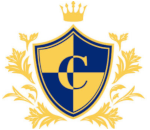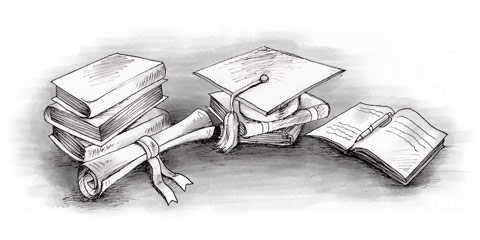As with primary school, there’s a national curriculum that must be studied by all children. In addition, the number of hours each subject must be taught each week is stipulated by the Ministry of Education. For the first and second years, the weekly requirements include:
- seven hours of Italian (including lessons in literature, grammar and writing);
- six hours of mathematics, physics, chemistry and natural sciences;
- four hours of history, geography and social studies;
- three hours each of a foreign language (usually English) and technical drawing;
- two hours each of physical education, music and art/design;
- one hour of religion.
In the third year, pupils lose one hour of Italian in favour of an extra hour of history, geography and social studies. Each subject is taught by a different specialist teacher, with the exception of Italian, history, geography and social studies, which are generally divided between two teachers.
The timetable totals 30 hours per week, schools having the option of extending this to up to 40 hours for extra-curricular or subsidiary study activities if there’s sufficient demand from parents (e.g. computer studies or learning a second foreign language). In recent years, schools have introduced a number of optional, experimental classes. These classes, which are generally financed from a school’s own budget, take place in the afternoons and may include sports, music lessons (instruments must usually be purchased by parents), film, computer and chess clubs, and foreign language conversation classes.
As at primary school, a report is completed by teachers each term on all subjects, which provides an overview of the aptitude, behaviour and achievement of each pupil. A separate, shorter report is produced for a student’s performance in religious instruction. Assessments include excellent ( ottimo), very good ( distinto), good ( buono), satisfactory ( sufficiente) and unsatisfactory ( non sufficiente).
At the end of the third year, pupils sit a state examination comprising written papers in Italian, a foreign language and mathematics and science, followed by an oral exam in all subjects except religion. Successful students are awarded their lower secondary school diploma ( diploma di licenza media) and graduate to upper secondary school.
Upper Secondary School
At the age of 14, students must make a choice as to the kind of upper secondary school ( scuola superiore, equivalent to a senior high school in the US) they want to attend, according to which subjects they would like to specialise in and what they would like to do when they leave school. There are essentially two categories of upper secondary school: a liceo (similar to a British grammar school), which provides a more academic training, and an istituto, where more practical and technical disciplines are taught.
Within these two categories, there are several types of school. In every school district there’s a classics school, a science school and a technical or a vocational school. In larger districts and provincial towns, there’s also a teacher training school and an arts school, and there may be a number of vocational schools, which often reflect the needs of local industries. Details of these schools are as follows:
- Arts school ( liceo artistico or istituto d’arte) – provides a four-year foundation course for students wishing to enrol at arts academies, study art or architecture at university, enter a career in the arts or teach art subjects at school;
- Classics school ( liceo classico) – Latin, Greek and Italian literature form a large part of the demanding academic curriculum. Philosophy and history of art are also studied in the last three years.
- Language school ( liceo linguistico) – Students study three foreign languages.
- Science school ( liceo scientifico) – traditionally for students planning to study science and medicine at university, with the emphasis on physics, chemistry and natural sciences. Latin and one modern language (usually English) are also studied to a high level.
- Teacher training school ( scuola magistrale or istituto magistrale) – provides a four-year training course for primary school teachers ( istituto magistrale) and a three-year training course for nursery school teachers ( scuola magistrale). A nursery school teaching diploma doesn’t qualify you to enrol at a university.
Technical school ( istituto tecnico) – By far the greatest number of upper secondary school students enrol in technical school, which prepares students to work in a technical or administrative capacity in agriculture, industry or commerce. Technical schools have responded to Italy’s fast-growing economy by offering an ever-widening range of courses tailored to the needs of employers, courses in computer skills in particular seeing tremendous growth in recent years. Technical schools follow the common curriculum for the first two years (see below), with some practical training carried out in workshops and businesses. In the last three years, the number of hours of practical training increases.
The main kinds of technical schools are agricultural, commercial (with specialisations in business administration, accountancy, commerce, foreign languages and computer programming), surveying, tourism, nautical, aeronautical and industrial (including many specialisations such as mining, electronics, engineering, industrial physics, computer science and food processing). There are also ‘feminine technical schools’, which were originally for the study of subjects traditionally associated with women, such as home economics, but now cater for both sexes and include the study of dietetics, social work and child care.
- Vocational school ( istituto professionale) – Vocational schools are the least academic of upper secondary schools. They aim to train people in a variety of craft and industrial skills, such as cabinet-making, carpentry, mechanics and engineering, building and construction, food and catering, secretarial and office work. The timetable varies between 35 and 40 hours per week, and for the first two years it includes 14 hours per week of practical training relevant to a pupil’s chosen area of specialisation. In the third year, the number of hours of specialist practical training increases to between 21 and 24 hours per week. After three years, students gain a diploma in their specialist subject ( diploma di qualifica), after which they may take a two-year course in order to earn their upper secondary school diploma, either at the vocational school or at a technical school.
Entry to upper secondary school isn’t competitive and, provided there are sufficient places available, students may attend the school of their choice.
Since 2001, all pupils have had the same core curriculum for the first two years of upper secondary school; this comprises Italian language and literature, mathematics, at least one foreign language (usually English), science, history, geography and social studies, religion and physical education. Their specialised courses ( indirizzi) start in the third year.
In all schools a considerable amount of homework is set for each subject, which may take the form of memorising information or writing an essay. As in lower secondary school, teachers test a student’s knowledge (and the extent to which he has done his homework) through regular oral and written tests ( prove scritte), which, together with a more general evaluation of a student’s performance, form the basis of a student’s report ( pagella). Marks ( voti) for all work are given out of ten, six being the minimum necessary to proceed to the next year.
All students can enter university, provided they complete a five-year course at secondary school and acquire their upper secondary school diploma (see below), and it’s now common for students who have attended technical and vocational schools to go on to university. In schools where the duration of the diploma course is only four years (e.g. artistic schools), students must stay on for an extra year to qualify for university entrance.
Before deciding which is the right kind of school for your child, it’s important carefully to study the curriculum offered by each. This is particularly important if a child is planning to attend a university outside Italy. In many countries (including the US and UK), university admission is based on competitive entry, and therefore the choice of secondary school and curriculum should reflect a specialisation in the subjects the student plans to study at university.
Diploma
At the end of the upper secondary school cycle, students study for the upper secondary school diploma ( diploma di maturità), which automatically qualifies them for enrolment at a university. It consists of three written exams ( esame) plus an oral test ( colloquio). The first exam involves writing an essay or newspaper article in Italian on a historical, social, scientific or literary subject. The second is a test of one subject from a number of options relating to a student’s specialisation; the subject of the exam is given to students two months in advance. The third exam, which was introduced in 1999, is an inter-disciplinary exam that includes questions on cultural and social issues and tests the knowledge of a foreign language.
The oral test follows the written exams and is conducted by a board of six teachers, who question students on all the subjects they’ve studied in their final year. Out of a possible total of 100 marks, a maximum of 45 is awarded for the written exams, 35 for the oral and 20 for scholastic credits, which are earned from students’ school reports during their last three years of study. To pass the maturità, a minimum of 60 marks are necessary.
The full title of the diploma depends on the kind of school students have attended, e.g. diploma di maturità classica for students who have attended a classics school and a diploma di maturità scientifica for students who have attended a science school. Diplomas gained at technical school are further qualified by the specialisation students have followed. The maturità is recognised throughout the world as a university entrance qualification, although it isn’t accepted by all institutions.
This article is an extract from Living and Working in Italy from Survival Books.


